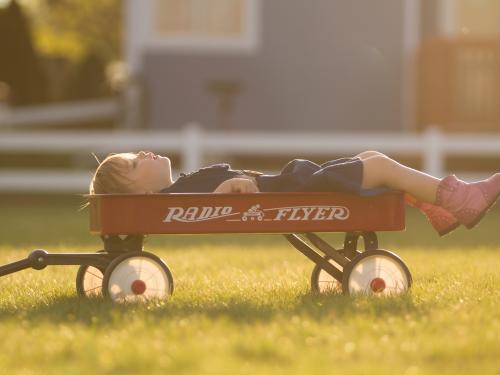
Because he believes we are helpless to fate,
a blindfolded six-year-old Calvin
pushes off the hilltop in his red wagon
as he asks his friend the old question:
Why are we powerless to rush toward oblivion?
Though Hobbes is a tiger
that believes in free will, he knows
also that humans are stupid to consequence
and so covers his eyes.
The friends, one named after a theologian,
the other a philosopher, hurtle pell-mell
down eight panels of hill,
between haphazard probabilities of trees,
past stones waiting to chock rubber wheels
and pitch them into a watercolor sky.
The Radio Flyer instead hits a tufted ramp of grass.
Our illusion of control is shown in the wagon’s flight,
how we ride backseat to our own lives,
thinking for a moment we can make choices
other than those allowed by who we are.
Hobbes’s furry bottom is where the artist wants it
and in the last panel, Calvin has once more
released the steering handle, one arm crossed
to his other elbow,
a finger thoughtfully to his black dot of mouth.
Hobbes peers over his paws clamped
to the wagon’s rim, electric and goggle-eyed
at the ground rushing to meet them.

